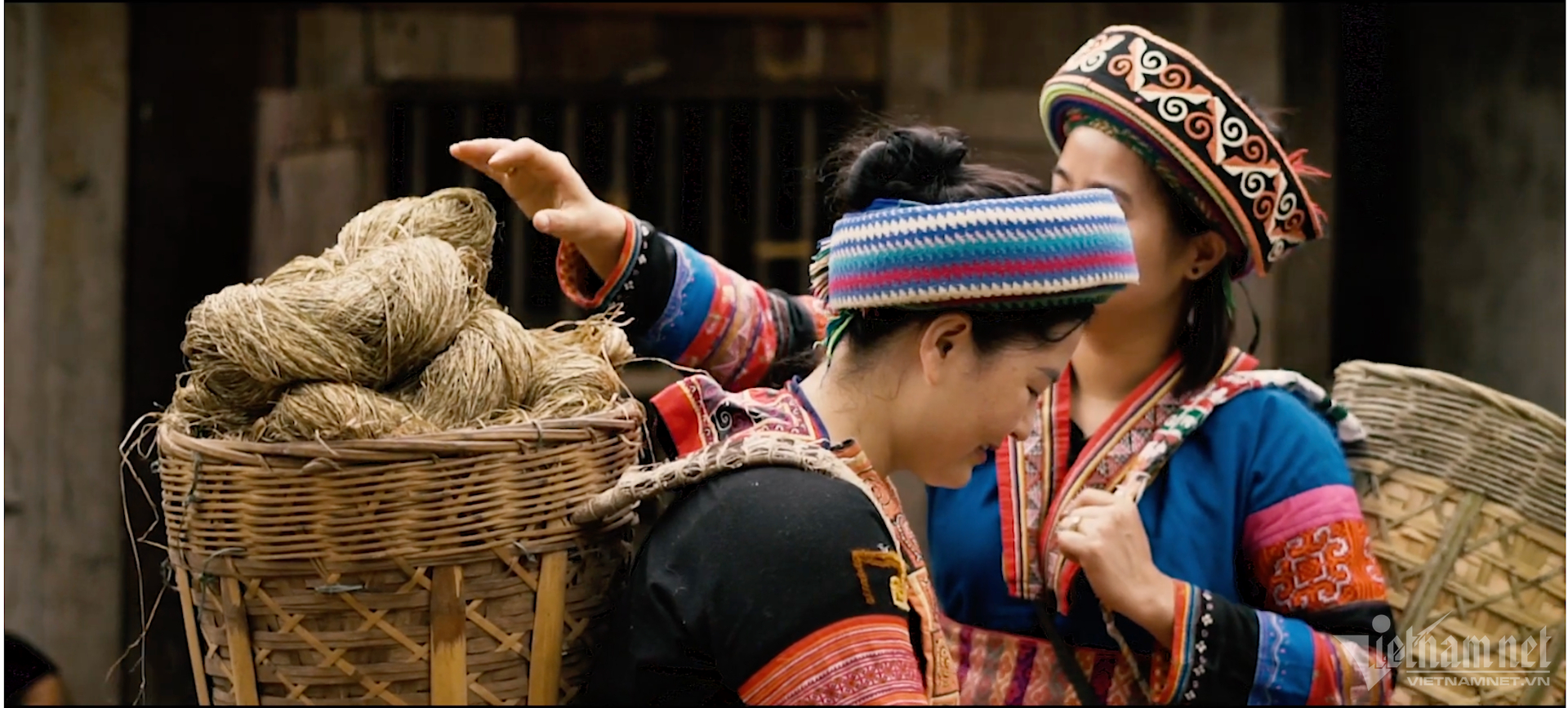
Products of Lung Tam weaving village have been exported to more than 20 countries such as the US, Japan, Switzerland, etc. No matter where they are, flax products of Lung Tam people are popular because of the uniqueness of the materials and brilliant patterns.
Lung Tam commune in Quan Ba district, Ha Giang province is located in a small valley surrounded by rocks on four sides. Lung Tam commune is at the foot of the mountains, next to the Mien River.
Coming to Lung Tam handicraft weaving village, visitors will admire the busy daily life of the local people. Mong women sit in front of the loom, diligently making beautiful fabrics and unique brocade products. For Mong women, making good piece of flax cloth is a matter of pride.
The main raw material used by women in Lung Tam is flax fiber. Most Mong women who reach adulthood have their own fields to grow flax. After being harvested, flax plants are carefully selected, soaked and plucked into small fibers.
Next, the flax fibers will be rolled into spinning frames. To keep the flax fiber soft, Mong women often boil or steam it. Lung Tam people color flax fibers with dyes derived from natural sources such as forest leaves and woods and do not use any kind of industrial chemicals.
Spinning is conducted anytime, anywhere in leisure time, so Mong women always carry flax with them. In the past, fabric was made only to serve family needs. Because the process of making the product is completely manual, it is very difficult and the productivity is not high. Furthermore, due to lack of interest in turning products into goods, the "door" for flax and traditional costumes of the Mong people in Lung Tam commune to reach the market is very narrow.
The Lung Tam Flax Weaving Cooperative was established in 2001 with Ms. Vang Thi Mai as the Chairman and now the Director according to the provisions of the 2012 Law on Cooperatives.
According to Ms. Mai, flax growing and weaving are not only professions but also the culture of local people. From an early age, Mong women are taught by their grandmothers and mothers to spin yarn and weave fabric. This profession is handed out to the next generation to become a part of local people's lives.
Realizing that the traditional profession was showing signs of being lost, with the support of non-governmental organizations, Ms. Mai boldly accepted the role of group leader and mobilized people in the village to join her cooperative.
At first, she only thought about how to make flax weaving survive, but through the process of making and persistently learning, applying techniques to production, improving designs, the cooperative has developed many products that satisfy the needs of domestic and international markets, thereby creating jobs, increasing income for people, and contributing to preserving the traditional profession of their ancestors.
To date, Lung Tam Linen Weaving Cooperative has 9 production groups, with 130 members, many of whom are artisans from 80 to over 100 years old. The cooperative members are mostly local people and 100% are Mong ethnic.
In addition to traditional clothing products, Mong women also actively create many new flax products to serve tourists such as scarves, wallets, handbags, pillowcases, tablecloths, mattresses, etc. with many colors and delicate patterns. In recent years, the cooperative's products have built their brand that is favored by domestic and foreign customers. They are exported to many picky markets such like France, the USA, Russia, Canada, Switzerland, Japan, etc.
To support Lung Tam people, the authorities of Quan Ba district and Ha Giang province have included Lung Tam in the province’s tourist route. Every day, the cooperative attracts many groups of tourists to visit, shop, and learn about local cultural traditions. This helps local people to sell their products and increase income right in the community.